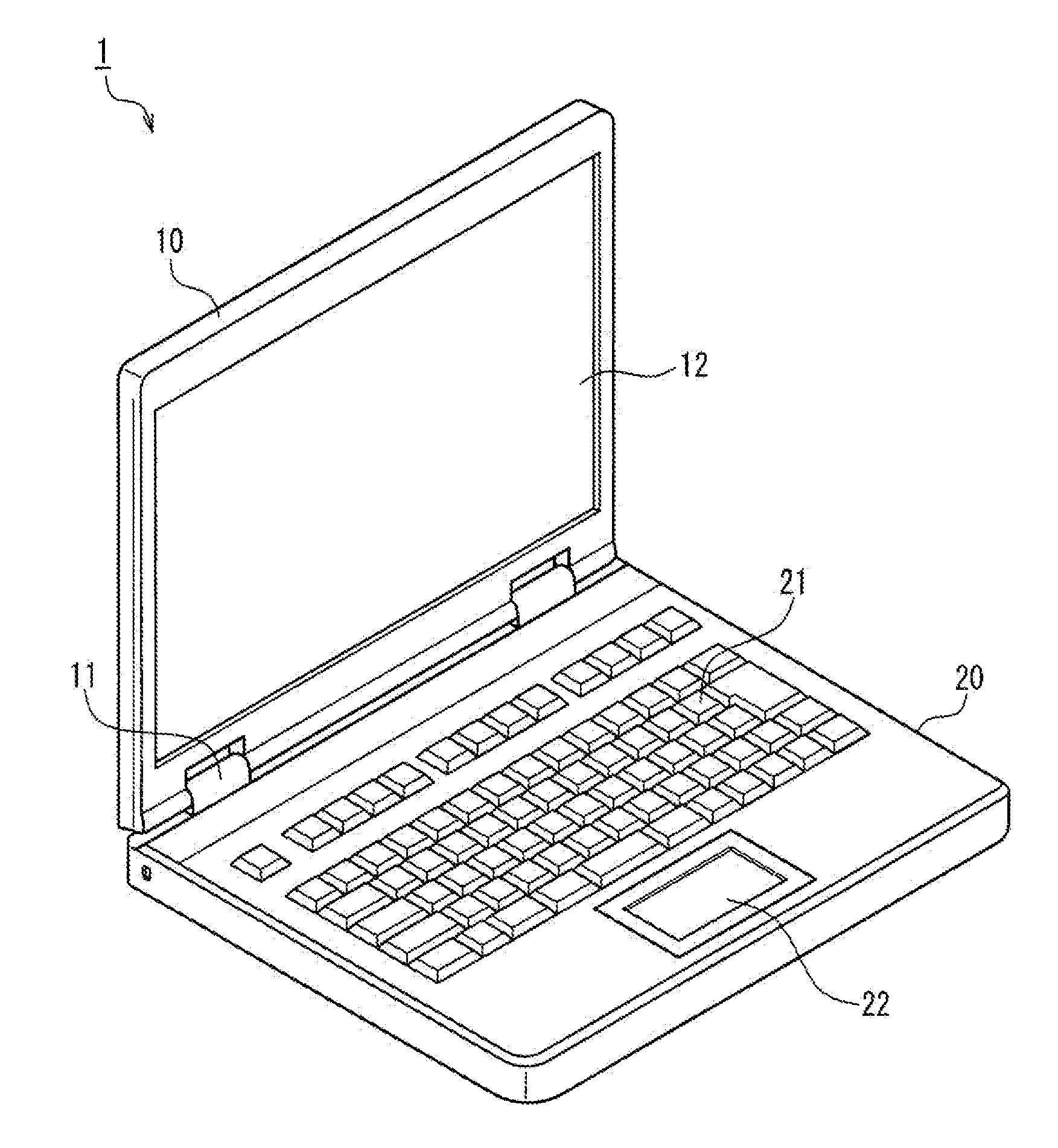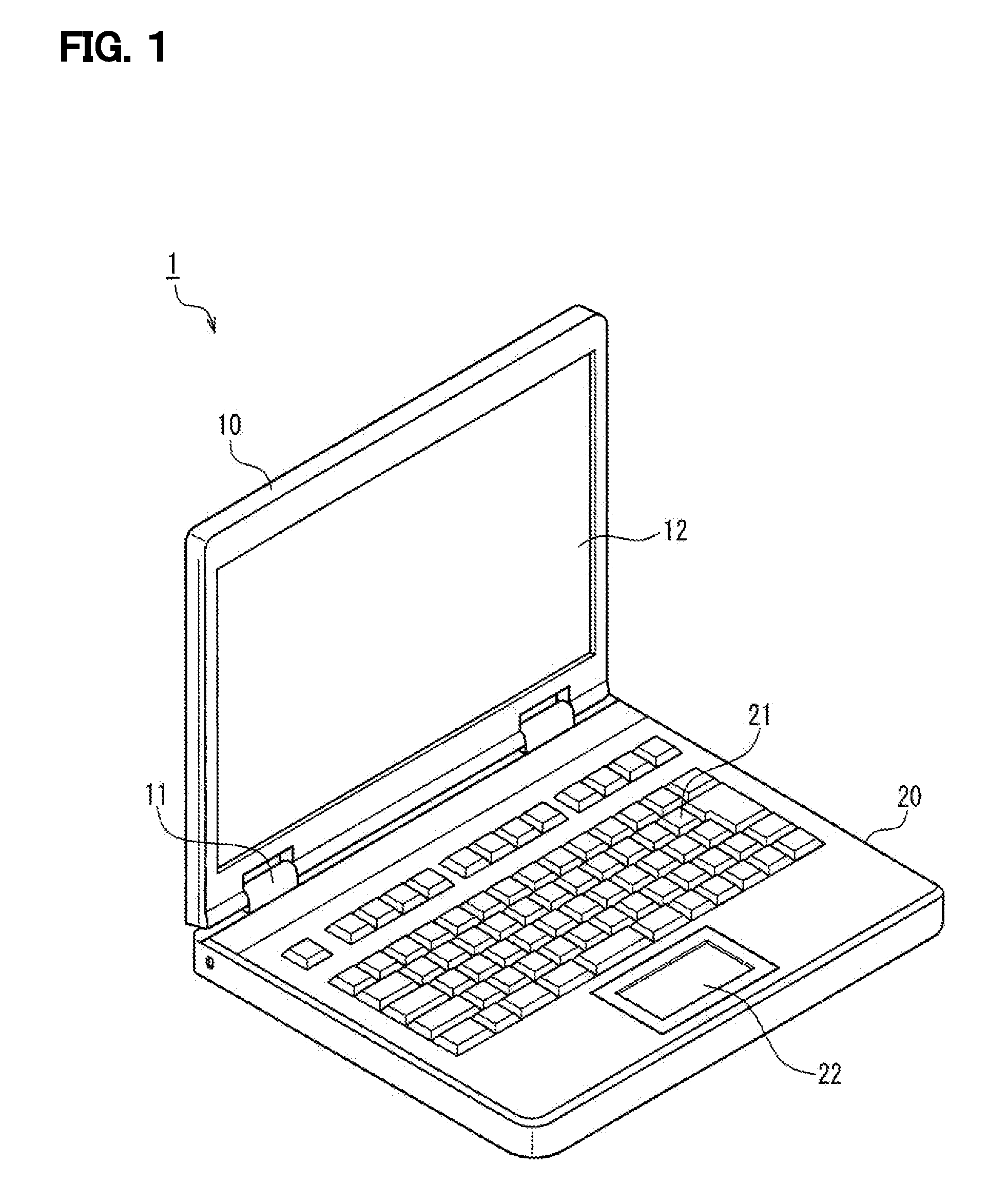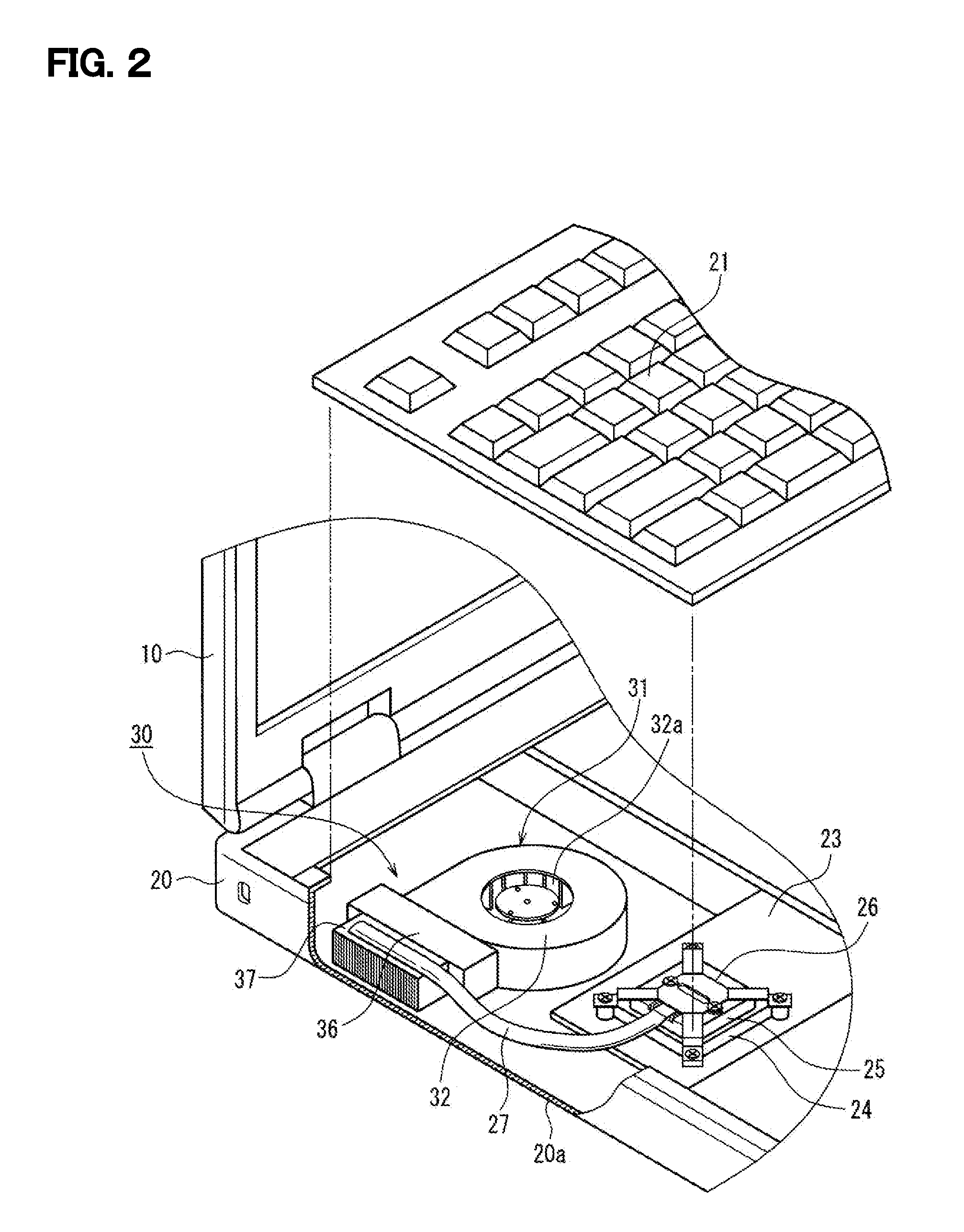Electronic Device
a technology of electronic devices and fins, which is applied in the direction of electrical apparatus casings/cabinets/drawers, cooling/ventilation/heating modifications, instruments, etc., can solve the problems of affecting the cooling effect of the fan, the inability to adjust the temperature of the fan, etc., to achieve sufficient heat dissipation effect of the heat dissipation unit, the effect of simple structur
- Summary
- Abstract
- Description
- Claims
- Application Information
AI Technical Summary
Benefits of technology
Problems solved by technology
Method used
Image
Examples
embodiment
[0031]Hereinafter, an exemplary case in which an electronic device is a notebook computer will be described as an exemplary embodiment.
[0032]FIG. 1 illustrates a notebook computer 1 as an electronic device according to an exemplary embodiment.
[0033]The notebook computer 1 is structured such that a cover component 10 having a display device 12, such as a liquid crystal panel, disposed on an inner side surface thereof is mounted so as to be pivotable relative to a main unit 20 having input devices, such as a keyboard 21 and a pointing device 22, disposed on the surface thereof, by means of a hinge mechanism 11.
[0034]Inside the main unit 20, a secondary battery (not shown) for operating the notebook computer 1, a hard disk drive (HDD) (not shown) acting as a main storage device, and other electric components are disposed. The notebook computer 1 can include, for example, an antenna module for wireless LAN communication, a disk drive for blu-ray discs and DVD discs, a web camera device,...
PUM
 Login to View More
Login to View More Abstract
Description
Claims
Application Information
 Login to View More
Login to View More - R&D
- Intellectual Property
- Life Sciences
- Materials
- Tech Scout
- Unparalleled Data Quality
- Higher Quality Content
- 60% Fewer Hallucinations
Browse by: Latest US Patents, China's latest patents, Technical Efficacy Thesaurus, Application Domain, Technology Topic, Popular Technical Reports.
© 2025 PatSnap. All rights reserved.Legal|Privacy policy|Modern Slavery Act Transparency Statement|Sitemap|About US| Contact US: help@patsnap.com



